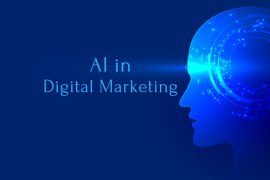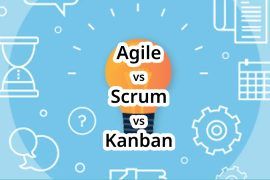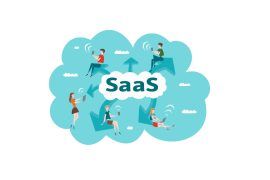An organization that hosts an application and makes it accessible to consumers online is known as a SaaS provider. Software as a service, or SaaS. This implies that the software is hosted on a server by a SaaS provider, and the user accesses it remotely. In this day and age, there are undoubtedly many software companies that fit this criterion. One of the three main models for cloud service is SaaS. The cloud service models are groups of services that cloud providers—companies that own and run computers in different data centers—offer to customers and clients.
The surge In usage of public and hybrid cloud-based solutions, integration with other tools, and centralized data-driven analytics are just a few of the factors contributing to the expansion of the Software as a Service (SaaS) market. Key companies developing company strategies through alliances and collaborations for business development will also open up a lot of prospects for market expansion.
Table of Contents
Future Prediction of SaaS

Artificial Intelligence
- Personalization – With the use of AI, SaaS providers may tailor their offers based on past usage patterns, user preferences, and other information. SaaS organizations may create Personalised customer experiences, boosting user satisfaction and customer retention, by utilizing machine learning algorithms.
- Chatbots usage – Chatbots with AI may answer client questions and offer 24/7 service. Customer service representatives can concentrate on more complicated matters because chatbots can swiftly resolve simple problems. As a result, customer wait times are decreased, response times are improved, and customer service is improved.
- User recommendation – Massive volumes of data about user interactions with your product are available for all SaaS products. The AI recommendation engine can be trained with the use of this data. These artificial intelligence (AI) recommendation systems can direct your users’ actions. You can utilize recommendation engines, for instance, to direct your users during onboarding.
- Improvement in Security – AI may be used to improve security for SaaS companies. Cybercriminals are developing new malware to attack your data centers as you innovate and enhance your SaaS offering. You can have a proactive approach to fending off cyberattacks and averting data breaches with the aid of AI. AI algorithms are being trained by cybersecurity experts to recognize suspect internet activity. These AI can identify new malware and isolate it before it compromises the architecture of your SaaS products. Data privacy and compliance laws can be enforced with the use of AI. SaaS apps can protect data while it is at rest and in transit using AI-driven encryption approaches, limiting access. In order to continuously monitor compliance and create reports, automated access restrictions and monitoring systems may also be put in place. This eases the workload on human administrators.
Vertical SaaS
The distinctive offering of vertical SaaS is to build an ecosystem of solutions that have been painstakingly designed for particular industry demands. This strategy promotes loyalty that’s difficult to break by enabling a deeper awareness of and integration into your customers’ workflows. Additionally, it opens up a wealth of upselling and cross-selling opportunities. Fintech-enabled vertical SaaS products have the potential to add significantly more value for both themselves and their clients.
Vertical SaaS has expanded significantly over the last ten years, and it doesn’t appear to be slowing down as more industries move online.
Benefits of using vertical SaaS
- Vertical SaaS offers a tightly integrated product, and the provider has complete control over the creation and implementation of native integrations. As a result, Vertical SaaS can provide integrations that are industry-specific yet aren’t included in the list of Horizontal SaaS integrations. Since they focus on a specific sector of the market, the company can also create newer integrations based on the requirements of the user.
- Higher returns – Before starting the development process for a new product, businesses typically perform surveys and research to better understand the market. Finding and fixing smaller business processes is made simpler as a result. More conversions are achieved with fewer resources thanks to the clear target market view and the personalized product, ensuring higher returns on your investment.
Block Chain
Blockchain is a relatively new technology that will continue to have an impact on the SaaS sector in the near future. What initially began as a technology used solely for cryptocurrencies like Bitcoin has developed into an intriguing option for many other sectors. SaaS is only a few decades old, yet since its inception, it has experienced exponential growth. SaaS is suited for the deployment of blockchain technology because it is a sector that is continually changing. The ability to pay for services using cryptocurrencies is one major way that blockchain has an impact on SaaS businesses. In the beginning, there was cryptocurrency. Decentralized blockchains are a key component of cryptocurrencies like Bitcoin. As a result, wherever blockchain technology is adopted, Bitcoin will almost certainly be accepted as a form of payment. In reality, a lot of people equate subscription cryptocurrency plans with software as a service blockchain. Utilizing blockchain technology efficiently also requires integration. Blockchains may be more trouble than they are worth if they cannot be integrated with the existing systems you use. There will therefore be a growth of blockchain-compatible goods, services, and solutions, which will have an impact on SaaS businesses as well. Integration increases accuracy and efficiency for both internal business processes.
Social Walls
Social walls have produced a revelation in the marketing sector. On large digital screens, social walls show user-generated material in real-time. User-generated content and social walls work together to help brands and organizations accomplish their main goals. Multiple marketing touchpoints, including e-commerce sites, events, websites, marketing campaigns, etc., might benefit significantly from the use of social walls. As a SaaS solution, social walls offer a number of advantages, the most important of which are social proof, audience engagement, increased sales and revenues, word-of-mouth marketing, and authenticity. Social barriers now exist in practically all sectors of the economy. The captivating visual display of social walls benefits all businesses, including hospitality, tourism, education, sports, and corporations.
Micro SaaS
Micro SaaS has become increasingly popular over the past few years as a result of the desire for flexible, adaptable software solutions that can be tailored to specific needs. Traditional SaaS products frequently have a one-size-fits-all design, which adds needless complexity and functionalities that are useless for all organizations. By providing focused, modular apps that can be readily incorporated into current technological stacks, micro SaaS tackles this difficulty. Micro SaaS companies have adopted the specialization mentality, concentrating on particular business activities or industries. These agile businesses create specialized software solutions that offer an enhanced user experience, quicker implementation timelines, and higher ROI. Micro SaaS providers focus their knowledge and resources on addressing specific pain points to create purpose-built solutions that outperform generic equivalents.
SaaS Future in India
SaaS adoption in India is still in its infancy, the sector’s long-term growth potential has grown significantly. Industry forecasts predict that the India SaaS market would grow to $20 to $25 billion by 2025. In world ,The size of the worldwide Software as a Service (SaaS) market was estimated at USD 237.48 billion in 2022, and it is anticipated that it would increase from USD 273.55 billion in 2023 to USD 908.21 billion by 2030, with a CAGR of 18.7% over the forecast period. Software as a Service (SaaS) has a bright future and is anticipated to keep expanding in the years to come. By offering software programs on a subscription basis, SaaS has altered the way businesses run by allowing them to save costs and boost efficiency. Data-focused strategies are currently the only thing influencing the development of SaaS-based applied business solutions. Future-oriented and useful cloud solutions will become more prevalent as businesses incorporate business intelligence and smart data into creating service-based solutions. In addition to being very practical, SaaS solutions are still reasonably priced across industries. With the ability to construct predicted solutions supported by insightful data, the artificial intelligence plugin simply increases their invincibility.
The SaaS sector is always evolving and changing. In order to remain competitive, the major industry participants continually introduce new strategies. Additionally, the businesses are concentrating on growing investments in the development of cloud services to broaden the market’s consumer base. Major players are also seeking new regions and geographies to boost industry revenue, either by entering the new market alone or in partnership with regional businesses around the world.
Conclusion
In this rapidly changing environment, SaaS organizations must prioritize agility and adaptation and take advantage of the top SaaS trends to increase their market share. Rather than attempting to satisfy everyone’s needs, one must concentrate on tackling a single problem with a single effective answer. The pace of technological advancement is not expected to slow down any time soon in the upcoming years. Therefore, SaaS organizations should be able to grow as a result of recognizing these key SaaS trends and how to take advantage of them.






